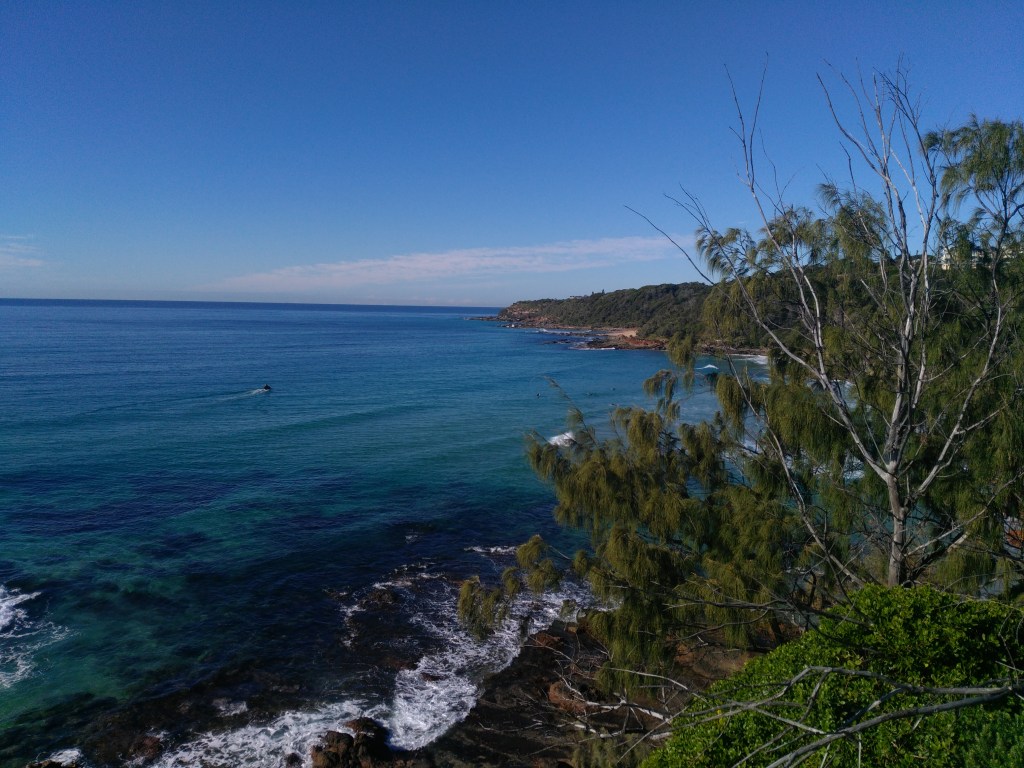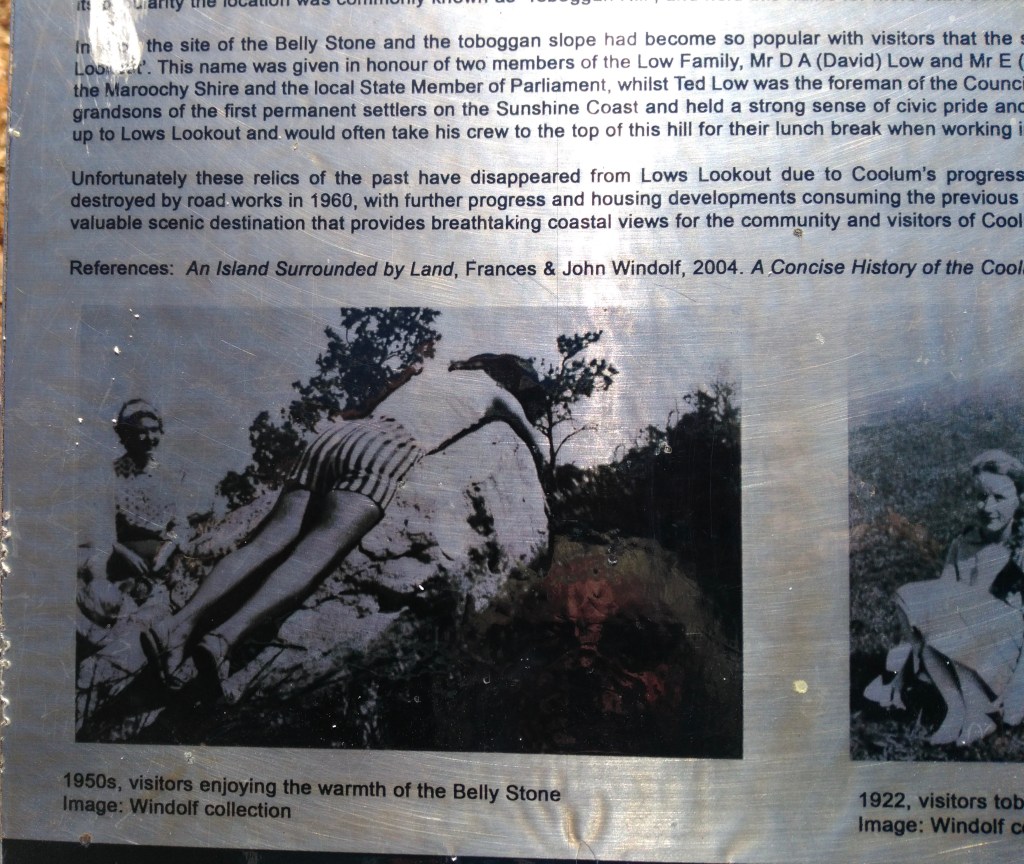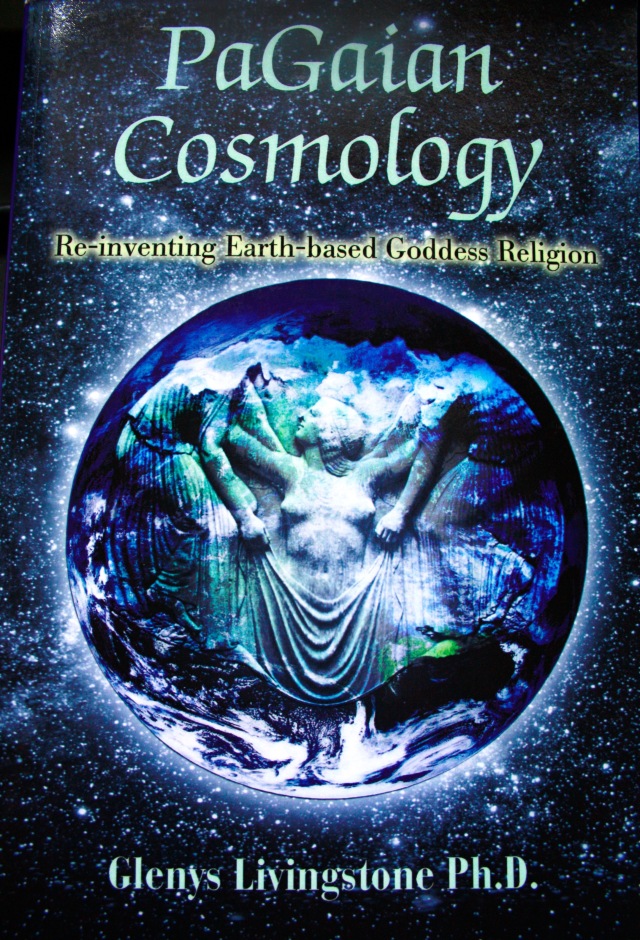Recently I travelled with my partner to a popular beach named Coolum within our region of East Coast Australia, and I was awestruck with its beauty. Being conscious of the original inhabitants of the land I live with, I googled for the names of the traditional people of the area and found that the Coolum district was the traditional land of the Yinneburra clan of the Undanbi tribes of Aboriginal people, which was in turn part of the larger group known as the Kabi Kabi. I thought about them and their lives of bliss before the Europeans showed up, and wondered if there may be a cultural centre telling more of their story, with some descendents present.
My partner and I then went up to a lookout named Low’s Lookout. There near the picnic shelter was a plaque informing visitors that the Indigenous people of Coolum “were attracted to this hill to visit the ‘Belly Stone’, a large rock which once sat at the southern end of the car park.” It went on: “The Belly Stone’s flat face sloped northwards, absorbing the sun’s heat, which the Coolum indigenous people used as a healing stone to treat a wide range of illnesses. It was said that all pains disappeared when one lay on the sun-warmed rock. After the colonial settlement of Coolum, the rock continued to be used as a healing stone for many years with a variety of people enjoying its benefits.” I was at first excited by this. Then after information about the European activities of tobogganing on the hill, and who it was now named for, the story related that “unfortunately these relics of the past” (i.e. the Belly Stone) had “disappeared from Lows Lookout due to Coolum’s progress and development. The Belly Stone was destroyed by road works in 1960, with further progress and housing developments consuming the previous toboggan slopes.” There was no lament about this, no acknowledgement of a tragedy or sacrireligous event. It simply goes on to conclude: “Today Lows Lookout is a valuable scenic destination that provides breathtaking coastal views for the community and visitors of Coolum.”
I was angry at this wanton destruction by witless whites, who had already long taken the sacred place from its original inhabitants. I did some more research, to see if I could find more information about the people of the region. I found a government document on Indigenous Cultural Heritage of the “Airport and Surrounds” which told within its pages in a matter of fact manner, some of the horrific history. I also found a Facebook page where a post mentioned the “Belly Stone” with some lament about its loss. And then I received an email from Academia.edu informing me of a paper that had been uploaded there by Ray Kerkhove Ph.D., an historian associated with the University of Queensland’s Aboriginal Environments Centre. His paper is entitled “Kabi Kabi Sites and History of the Legendary Mount Coolum”, and gives detailed description of the history and variety of relationship between Aboriginal and European people in the region, including some good, and the resistance and the murder, and then the eventual forced removal of the Aboriginal people to ‘reserves’. I have been notified of many other articles that Ray Kerkhove has written about the region, and found videos of presentations he has given on the topic.
I have since found that an annual arts and cultural festival “celebrating place” is held in the region – the Horizon Festival. It acknowledges the traditional country of the Kabi-Kabi people, and many Aboriginal artists and storytellers inform the festival and participate in it. This is encouraging, yet there needs to be a more, more visible acknowledgement and presence for everyday inhabitants and visitors: I had to do quite a bit of searching. Hopefully the days of ‘witless whites’ are numbered, the grievous losses understood, and healing/wholing nurtured.
Glenys Livingstone 2020, born and living in the country of the Wakka Wakka people.







Oh, Glenys, I felt my heart contract with pain as I read your post! I can relate.
I live in a part of South Carolina that was once home and hunting grounds for a variety of indigenous people. Near us is a suburban town called Boiling Springs. I went looking for the springs once: all that’s left is an indentation, with a small grille over it, on the edge of a parking lot by a strip mall. There is a tiny plaque. That’s it. I couldn’t even get close enough to make an offering at the garbage-clogged former spring.
Sometimes– no, often these days — I am ashamed to be “white.”
Onoosh Gahagan Spartanburg, SC
>